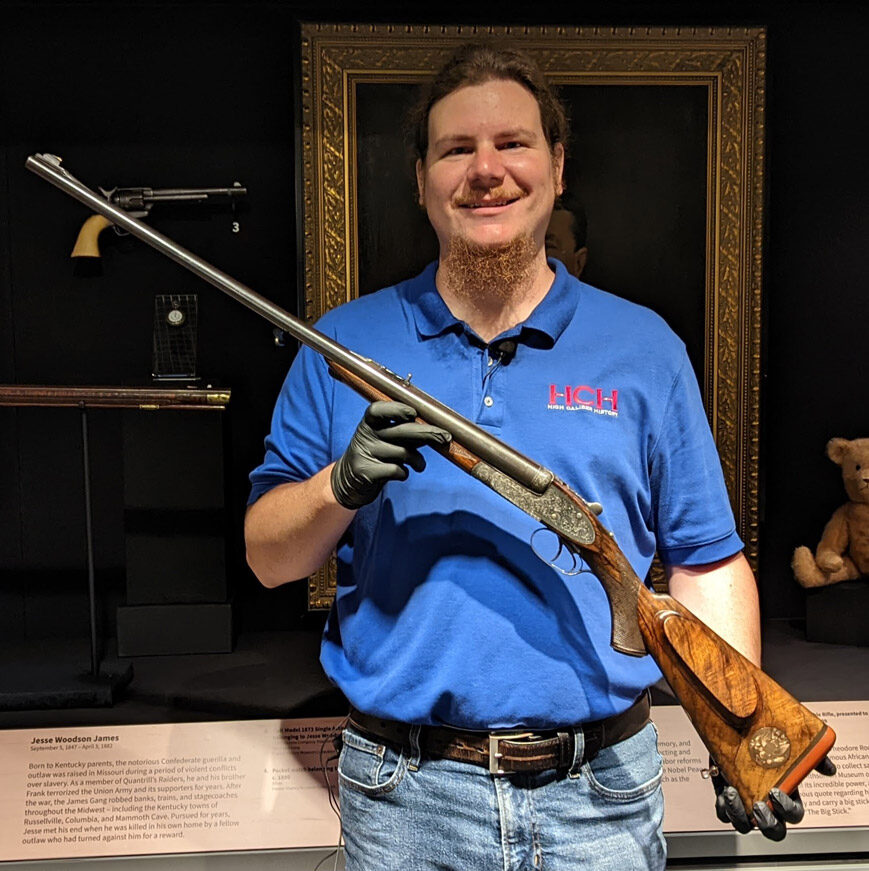
Introduced in the year of its name, the Winchester Model 1892 represented John Moses Browning at the height of his genius and the peak of his partnership with Winchester. Building upon the success of his heavy-framed Model 1886, Browning engineered the 1892 as a lighter, more compact lever-action rifle capable of handling popular pistol calibers of the era. With its dual locking-block system, the design delivered both strength and smooth operation. It quickly establishing itself as one of the most reliable and versatile carbines of the late 19th and early 20th centuries.
This particular example, bearing serial number 757501, dates to 1914. It is chambered in .38 WCF (.38-40 Winchester), which is a cartridge prized for its balanced blend of accuracy and stopping power. It is outfitted with a 20-inch blued barrel, paired with a smooth walnut straight-grip stock and forearm. This gave it the durability and quick handling qualities that made it a favorite of ranchers, hunters and lawmen alike. Equipped with a blade front sight and adjustable rear, it provided dependable accuracy whether in close quarters or on the open range.
LAPD Heritage
While the Winchester Model 1892 was already a legendary design by 1914, what sets this particular rifle apart is its law enforcement provenance. The left side of the buttstock bears the marking: “LAPD-293.”
This stamp indicates that the rifle once belonged to the inventory of the Los Angeles Police Department. It was almost certainly issued as a departmental firearm during the early 20th century. Firearms with direct police markings are highly sought after as their own category of collectible guns. They represent a tangible link to the history of American law enforcement. In the era before the widespread adoption of modern service pistols and patrol rifles, long guns, such as the Winchester 1892, were often used for patrol, guard duty or special assignments. Departmental markings like this ensured accountability and tracked firearms within police arsenals.
For collectors, such provenance elevates a rifle from being merely an excellent example of a Browning design. It is a documented artifact of municipal history, directly tied to the growth and modernization of one of America’s largest police forces.
Condition & Collectability
Despite being more than a century old, this 1892 carbine retains its original blue finish and walnut furniture with the honest character expected of a service arm. The action remains crisp, the bore bright and the “LAPD-293” marking clearly visible on the left side of the buttstock.
With over one million Model 1892s produced before production ended in 1941, standard guns remain relatively available. However, department-marked examples from major metropolitan police forces like Los Angeles are exceedingly scarce. They command strong interest from collectors of both firearms and law enforcement history.
A Unique Intersection of Histories
The Winchester Model 1892 stands as one of Browning’s most enduring lever-action designs. It is praised for its strength, balance and reliability. This example carries that legacy one step further, embodying not only the story of Winchester’s engineering but also a chapter in the history of American policing, available on Collector’s Elite Auctions.
For the collector, it represents a rare dual provenance: a mechanical classic from Winchester paired with the storied badge of the LAPD, frozen in time from 1914.
About the Author
-
Logan Metesh is an arms historian with a focus on history and development. He has a degree in historic preservation and has worked for the National Park Service and the Smithsonian Institution. The ease with which he can recall obscure historical facts and figures makes him very good at Jeopardy!, but exceptionally bad at geometry. Over the years, he has contributed to multiple books and written hundreds of articles for different publications. He is the owner of High Caliber History LLC and the host of the No Lowballers Podcast.
View all posts
